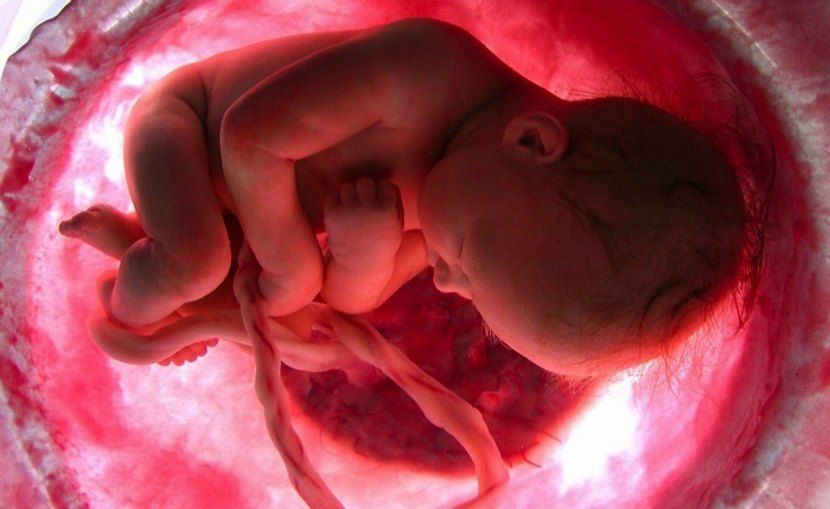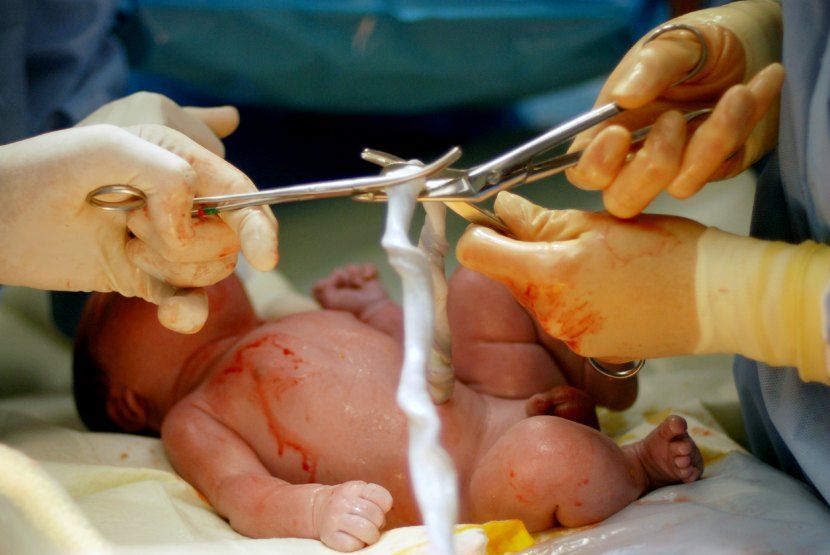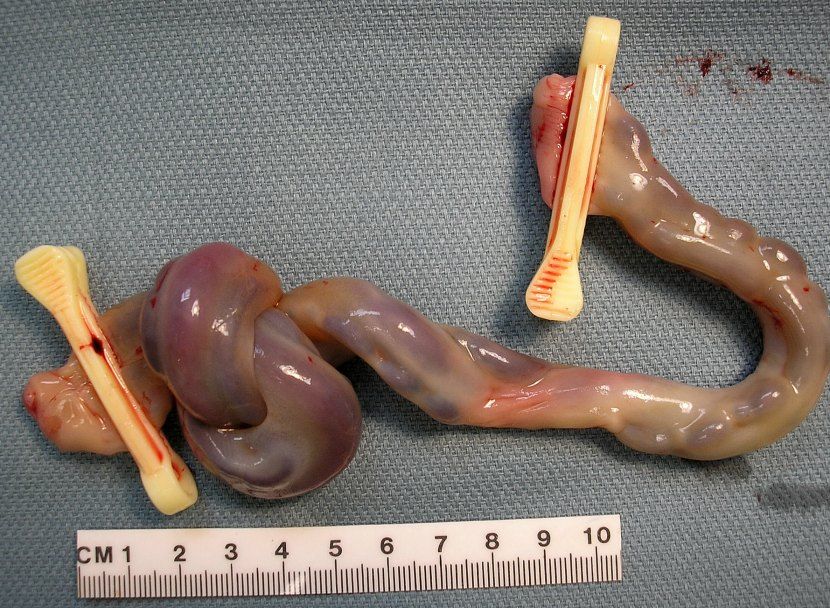
The umbilical cord is essential for the pregnancy to be carried to term because is in charge of the baby being fed through the placenta. It is a kind of tube about 56 cm long and 1 to 2 cm in diameter. The umbilical cord contains major arteries and veins that act to exchange nutrients and oxygen-rich blood.
During pregnancy there may be complications in the umbilical cord, forming even false knots that have no clinical significance, but there may be other complications with knots that can lead to fetal death.
Formerly after childbirth the umbilical cords were discarded, today the stem cells contained in the umbilical cord are used for healing purposes like cancer, leukemia among other pathologies. Mothers can choose to keep it in a cord blood cell bank to keep them alive and be able to use them in the case of a family pathology (paying money) or donate it so that other people can be lucky enough to have it to be cured .
It can be said that the cells of the umbilical cord are almost miraculous and that is why science is so interested in continuing to study all their properties. Next I am going to explain all this to you in a little more detail so that you can understand not only the functions of the umbilical cord but also its importance in the lives of unborn babies, and also the importance it has today to be able to cure some diseases.
The umbilical cord
The umbilical cord serves for nine months to give life to your baby, it has been providing oxygen and nutrients with what has been able to develop and become your precious child. When the baby is born the umbilical cord is cut and then it begins to dry out and will fall off in about three to six weeks, giving way to your child's belly button.
The role of the umbilical cord
It may seem like a piece of meat of little more than 56 cm but it is much more than you imagine. The umbilical cord has the main function of bonding the developing baby with its mother, who is vital to keeping the baby alive in the womb.
One end of the umbilical cord is attached to the baby and the other to the placenta, which is very close to the wall of the uterus, which allows the transfer of food between mother and baby and at the same time ensures that it does not mix with the blood.
Through the placenta, oxygen and nutrients find their way to feed the baby, while carbon dioxide and waste products travel in the opposite direction from the mother and are excreted.
It is essential for the life of the baby
The umbilical cord is essential to keep the baby alive. Nature is wise and the umbilical cord is wrapped in a kind of jelly that gives strength and resistance to the umbilical cord so that it does not fold in on itself and does not become knots. Although there are known cases that occur and can even cause fetal death, as I mentioned at the beginning of the article.
The umbilical cord can wrap the baby's neck, arms and legs at any time during pregnancy and delivery, something that will have to be carefully monitored. For twins who share the same amniotic sac, the cords can become tangled and cause serious problems.
Normal movement within the uterus can sometimes tie knots in the cord, which if tightened can cause blood flow to stop and blood clots to form inside the vessels, which can deprive the baby of oxygen or nutrients. .
Rich source of stem cells
Embryonic stem cells, which are undifferentiated cells, are cells of the developing baby that have great almost miraculous potential because they can become any type of cells of the body, of the skin, of the nervous tissue of the cells that make up the heart or the kidney .
There has been a lot of research to find out how better use the cells contained in the umbilical cords to be able to cure diseases such as childhood leukemia, but they are also given for other uses such as treating spinal cord injuries, heart disease, and brain disease. For this reason, some parents choose to store their umbilical cord blood in private or government banks.
In government banks (or public banks) donated umbilical cords are available to anyone in need and that it is compatible, and if the person who has donated it needs its use at any time, they will have to find one that is compatible so that they can benefit from having donated an umbilical cord at the time.
As you have seen, the umbilical cord is much more than a simple cord, it is a source of life that unites the mother with the baby so that the miracle of life can be given. And if this were not enough, in addition to its main function in nature, it also has enough capacity to save the lives of some sick people.
Have children? If so, did you donate the umbilical cord to a public bank or did you want to donate it to a private one so that you could use it at a time when you might need it?
I really consider that the umbilical cord is nature in its purest formIt is the generator of life in mammals, it is what helps us so that our species can continue to be born and evolve in our world. And if we all stopped to think about the importance of life and the evolution of species, we would respect more human life and that of any living being. Nature is wise and the umbilical cord is the best proof of it.



it is very nice that they show this
THANK YOU FOR THE INFORMATION IT SERVED ME FOR A JOB
Thank you very much for the information. I have heard that stem cells cannot be stored in Spain and that the companies that offer them store cells in Germany.
That's right? Is this type of company safe?
Yes, that is true. You can find all the information you are looking for in the following link:
http://www.sevibe.es/celulas-madre/dudas-mas-frecuentes/legislacion-y-etica#1
It doesn't seem like it's going away.
Thanks for the information, I just didn't know.